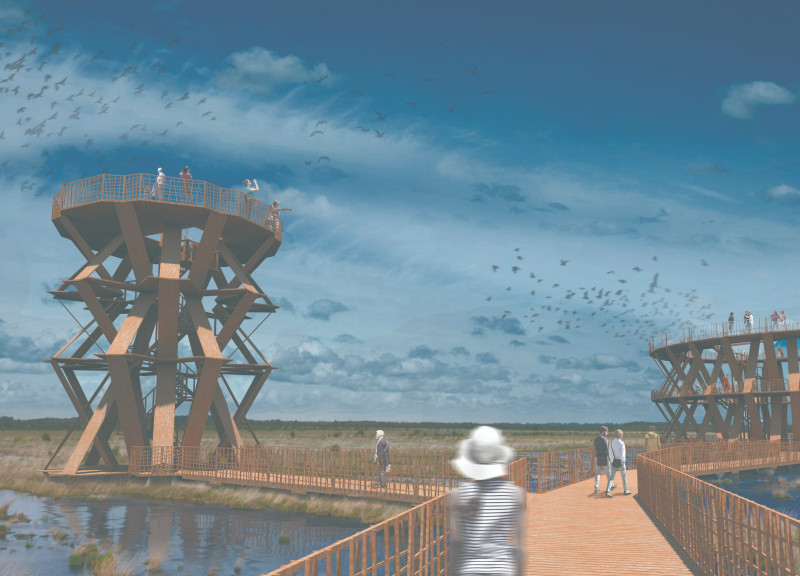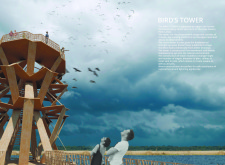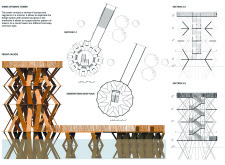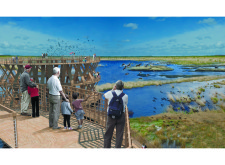5 key facts about this project
### Overview
The Bird's Tower is situated at The Pape Nature Park in Latvia, designed to replace a previously burned observatory. The project aims to enhance birdwatching experiences while integrating with its natural context. The structure features an axially symmetric design with four distinct levels, providing optimal viewpoints that align with the ecological framework of the park. Its round plan allows for a clear visual profile from multiple angles, ensuring that the building remains unobtrusive in the landscape.
### Design and Structural Strategy
The design utilizes branching forms reminiscent of local flora, with an interlocking geometric layout that efficiently distributes weight and allows for various observation projections. A lattice structure enhances openness, affording visitors uninterrupted views of both the terrestrial and aerial environments. Accessibility is prioritized through the configuration of stair systems and observation decks, facilitating inclusive experiences for all visitors. The design also allows for potential future expansions, maintaining coherence with the existing architectural language.
### Material and Environmental Integration
Wood serves as the primary construction material, offering warmth and sustainability while minimizing environmental impact. Steel reinforcements provide structural integrity without detracting from the overall aesthetic. All wood elements are treated for durability, effectively reducing maintenance requirements. Pathways constructed with wooden decking minimize ecological disruption, creating a harmonious relationship between the tower and its surroundings. The design encourages active engagement with nature, fostering ecological awareness and appreciation for local bird species among park visitors through varied viewing experiences.






















































